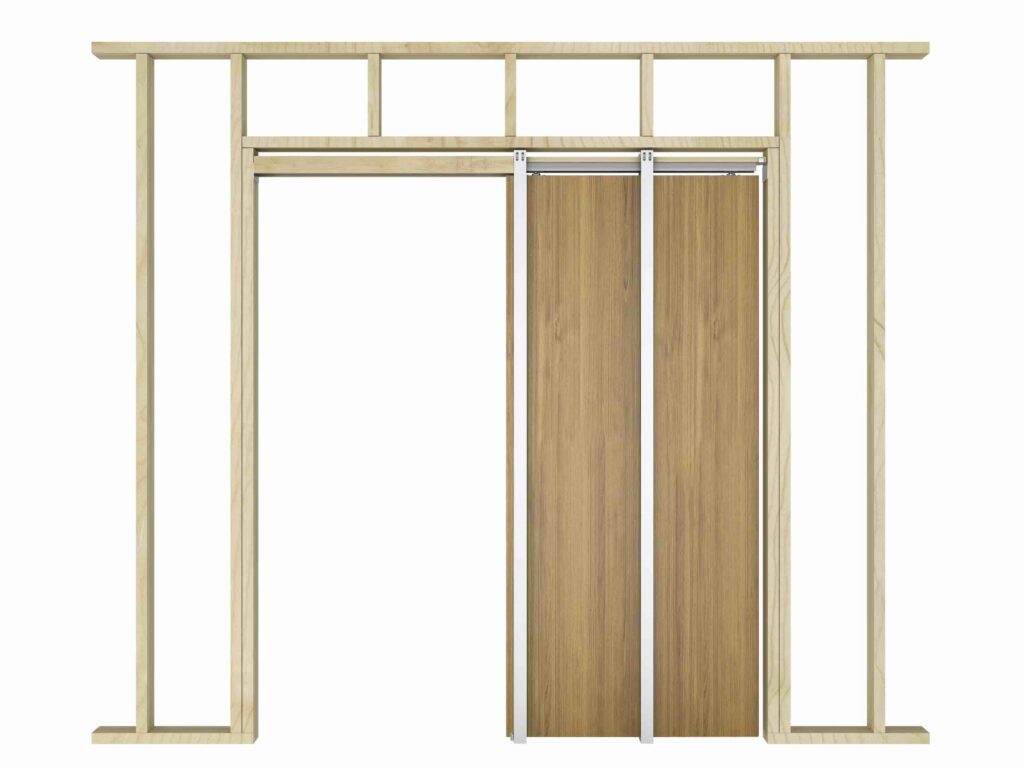In modern architecture and interior design, space is a premium—especially in urban homes and commercial properties where every square metre counts. One of the most innovative and efficient ways to maximise usable space while maintaining style and functionality is by installing frameless pocket door kits or sliding door systems. These sleek, space-saving solutions are becoming increasingly popular for both residential and commercial applications. But what are they, and why are they worth considering?
What Is a Frameless Pocket Door Kit?

A frameless pocket door kit allows a sliding door to disappear into a cavity within the wall when opened, creating a seamless transition between rooms without the need for visible door frames or architraves. Unlike traditional pocket doors that may include exposed trim or jambs, frameless systems offer a flush, minimalist appearance that blends effortlessly into modern interiors.
Key Advantages of Frameless Pocket Door Kits
1. Maximised Floor Space
Since pocket doors slide into the wall, they eliminate the swing radius required by hinged doors—perfect for small rooms, hallways, ensuites, or open-plan layouts.
2. Streamlined Aesthetics
Frameless systems create a clean, architectural look. The absence of architraves and visible hardware contributes to a modern, unobtrusive finish that enhances high-end interiors.
3. Improved Flow and Accessibility
Sliding pocket doors improve accessibility, especially in tight spaces or for those with mobility issues. They’re also ideal for creating flexible layouts that open or divide spaces as needed.
4. Versatility
Available in single, double, and telescopic configurations, pocket systems can accommodate glass, timber, or flush panel doors. Some systems are even compatible with soft-close mechanisms and automated operation.
Frameless vs. Framed Pocket Doors
While both options allow doors to retract into walls, frameless systems are designed to integrate completely flush with the surrounding wall surface. This requires a more precise installation and often comes with a premium finish—but the visual payoff is significant. Framed systems, by contrast, typically include visible architraves or shadow gaps that interrupt the continuity of the wall.
Where to Use Frameless Sliding Door Systems
-
Living rooms: Separate open-plan spaces while preserving light and flow.
-
Bathrooms & ensuites: Save space in compact areas.
-
Kitchens & pantries: Conceal storage areas without bulky door swings.
-
Offices & meeting rooms: Create privacy without closing off the space entirely.
-
Wardrobes: Sleek solutions for built-in storage.
Things to Consider Before Installing
-
Wall Thickness: A standard partition wall may need reinforcing or widening to accommodate the pocket.
-
Structural Modifications: You may need to avoid load-bearing walls or reroute wiring and plumbing.
-
Door Type Compatibility: Make sure your chosen system supports the door material and weight.
-
Fire Ratings: While less common, fire-rated pocket door systems are available if required by building regulations.
Final Thoughts
Frameless pocket door kits and sliding door systems are redefining the way we think about interior spaces. Whether you’re designing a minimalist home, upgrading a commercial fit-out, or simply trying to make better use of limited square footage, these systems offer both elegance and efficiency. With the right installation and quality hardware, a frameless sliding door can elevate your space from functional to exceptional.

